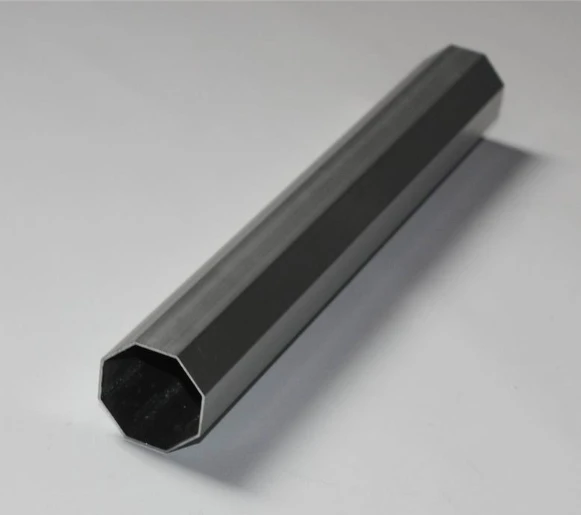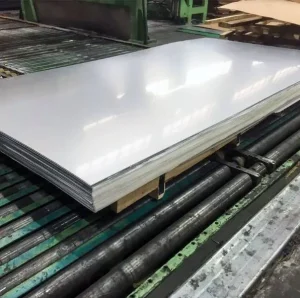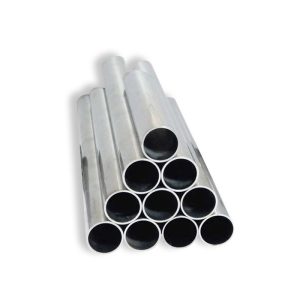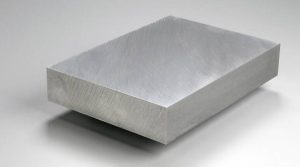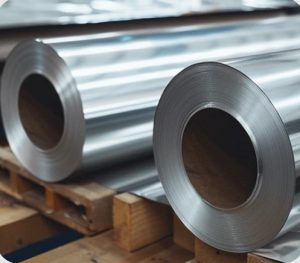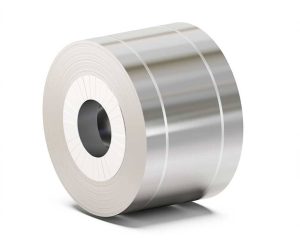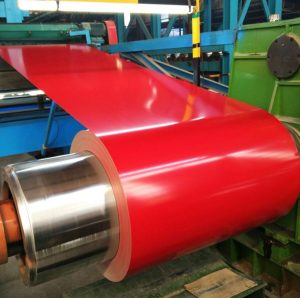Introduction
Steel tubing has become a fundamental material in modern construction due to its strength, versatility, and durability. Among various shapes, octagonal steel tubing stands out because of its unique geometric profile, offering both aesthetic appeal and structural advantages. Its distinctive shape combines the benefits of round and rectangular tubes, providing numerous creative applications in the construction industry. This comprehensive guide explores five innovative ways to utilize octagonal steel tubing in construction projects. We will analyze its physical properties, compare it with other structural materials, and provide insights into practical implementation, ensuring that both novices and seasoned professionals can leverage its full potential.
1. Understanding Octagonal Steel Tubing: Composition, Properties, and Advantages
1.1 Material Composition and Manufacturing Process
Octagonal steel tubing is typically manufactured from carbon steel, stainless steel, or alloy steel, depending on the application’s strength and corrosion resistance requirements. The manufacturing process involves:
- Hot or Cold Drawn Process: Steel billets are shaped into octagonal profiles through extrusion or rolling.
- Welding or Seamless Manufacturing: Tubes can be seamless or welded, with seamless offering higher strength and uniformity.
- Surface Finishing: Processes such as galvanization, powder coating, or polishing enhance corrosion resistance and aesthetic appeal.
1.2 Physical and Mechanical Properties
| Property | Description | Typical Values |
|---|---|---|
| Tensile Strength | Resistance to pulling forces | 400-700 MPa |
| Yield Strength | Stress at which deformation begins | 250-400 MPa |
| Corrosion Resistance | Ability to withstand environmental elements | Varies with coating |
| Flexural Strength | Resistance to bending | High, due to shape stability |
| Weight-to-Strength Ratio | Efficiency in load-bearing | Superior to many other shapes |
1.3 Advantages of Octagonal Steel Tubing
- Aesthetic Appeal: The geometric shape offers a modern look, ideal for architectural features.
- Structural Integrity: The shape provides increased resistance to torsion and bending.
- Ease of Installation: Flat surfaces facilitate connection points and welding.
- Versatility: Suitable for framing, railing, supports, and decorative elements.
- Efficient Load Distribution: The shape distributes stress evenly across the structure.
2. Structural Applications: Reinforcing and Supporting Frameworks
2.1 Use in Beams and Columns
Octagonal steel tubing serves as an excellent material for load-bearing beams and columns due to its strength and shape stability. Its geometric profile provides superior resistance against torsion and lateral forces, making it ideal for supporting roofs, floors, and walls.
- Advantages over Rectangular or Round Tubes:
- Better torsional resistance.
- Unique aesthetic appeal.
- Increased surface area for connections.
2.2 Modular Construction and Prefabricated Components
The uniformity of octagonal steel tubes simplifies prefabrication processes. They can be easily cut, welded, and assembled into modular units, reducing construction time and improving precision.
2.3 Case Study: Multi-Storey Building Frameworks
In high-rise buildings, octagonal steel tubing enhances structural stability, especially in seismic zones. Its shape helps distribute seismic forces more evenly, reducing stress concentrations.
2.4 Comparative Analysis with Other Structural Materials
| Material Type | Strength | Torsional Resistance | Ease of Fabrication | Cost | Aesthetic Flexibility |
|---|---|---|---|---|---|
| Octagonal Steel Tubing | High | Very High | Easy | Moderate | High |
| Rectangular Steel Tubing | High | High | Easy | Moderate | Moderate |
| Round Steel Tubing | High | High | Moderate | Moderate | Low |
| Concrete | Moderate | Low | Difficult | Low | Limited |
This comparison underscores the unique advantages of octagonal steel tubing in supporting frameworks, especially where torsional strength and aesthetic design are priorities.
3. Architectural and Decorative Uses
3.1 Structural Elements in Modern Architecture
The geometric shape of octagonal tubing lends itself to innovative architectural features such as:
- Decorative Columns and Pillars: Providing both support and visual interest.
- Railings and Balustrades: Offering safety with a stylish appearance.
- Canopies and Awnings: Enhancing outdoor spaces with sleek, modern designs.
3.2 Artistic Installations and Facades
Octagonal steel tubing can be used in creative facades, sculptures, and art installations. Its shape allows for complex geometric patterns and dynamic visual effects.
3.3 Lighting and Structural Accents
LED lighting integrated into octagonal tubing creates striking visual effects in public spaces, commercial complexes, and residential projects.
3.4 Advantages in Aesthetic Customization
- Versatility in Design: Can be combined with other materials like glass or wood.
- Ease of Fabrication: Straight cuts and welding facilitate complex designs.
- Durability: Long-lasting finishes maintain appearance over time.
4. Mechanical and Industrial Applications
4.1 Use in Machinery Frames and Supports
Octagonal steel tubing’s strength and shape make it suitable for constructing frames and supports in industrial machinery, conveyor systems, and equipment housings.
4.2 Conveyor and Material Handling Systems
Its geometric profile allows for easy integration into conveyor belts and automated systems, providing stability and ease of maintenance.
4.3 Structural Supports in Heavy Equipment
Heavy-duty construction equipment benefits from octagonal tubing due to its torsion resistance and load-bearing capabilities, especially in rugged environments.
4.4 Advantages Over Other Tubing Shapes
| Feature | Octagonal Steel Tubing | Rectangular Steel Tubing | Round Steel Tubing |
|---|---|---|---|
| Torsion Resistance | Superior | Good | Good |
| Load Distribution | Uniform | Good | Good |
| Ease of Welding | High | High | Moderate |
| Aesthetic Appeal | High | Moderate | Low |
| Cost | Moderate | Moderate | Moderate |
This comparison highlights why octagonal steel tubing is often the preferred choice in industrial applications demanding durability and design flexibility.
5. Fencing, Gates, and Outdoor Structures
5.1 Fencing and Boundary Walls
The structural strength and aesthetic appeal of octagonal steel tubing make it ideal for fencing, gate frames, and boundary walls. Its geometric shape provides a modern look and enhanced security.
5.2 Garden and Patio Structures
Octagonal tubing can be used in pergolas, arbors, and trellises, offering both support for climbing plants and visual interest.
5.3 Outdoor Furniture and Fixtures
Tables, benches, and decorative fixtures constructed from octagonal steel tubing are durable and weather-resistant, suitable for outdoor environments.
5.4 Advantages in Outdoor Construction
- Corrosion Resistance: When coated properly, withstands weather elements.
- Design Flexibility: Easy to customize shapes and sizes.
- Ease of Installation: Simplifies assembly and maintenance.
6. Innovations and Future Trends in Using Octagonal Steel Tubing
6.1 Integration with Smart Technologies
Embedding sensors and lighting components into octagonal tubing can create smart structures for lighting, security, and environmental monitoring.
6.2 Sustainable Construction Practices
Recycling and eco-friendly manufacturing processes make octagonal steel tubing a sustainable choice, aligning with green building standards.
6.3 Advanced Coatings and Finishes
Innovative coatings such as powder coating or galvanization extend lifespan and aesthetic options, making octagonal tubing more versatile.
6.4 Custom Fabrication and Modular Systems
The development of prefabricated modular components enables rapid assembly and flexibility in design, especially in large-scale projects.
7. Comparative Analysis: Octagonal Steel Tubing versus Other Structural Shapes
| Shape | Strength | Torsional Resistance | Ease of Fabrication | Aesthetic Appeal | Cost Efficiency |
|---|---|---|---|---|---|
| Octagonal | Very High | Very High | Easy | High | Moderate |
| Rectangular | High | High | Easy | Moderate | Moderate |
| Circular | High | High | Moderate | Low | Moderate |
| Square | High | Moderate | Easy | Moderate | Moderate |
This table emphasizes the unique combination of strength, aesthetic flexibility, and ease of fabrication that makes octagonal steel tubing a preferred choice in many construction scenarios.
8. Common Questions About Octagonal Steel Tubing in Construction
Q1: Why is octagonal steel tubing preferred over rectangular or round tubing in modern construction?
Answer: The octagonal shape offers a unique blend of structural strength and aesthetic appeal. Its geometry provides superior torsional resistance, which is crucial in dynamic or seismic zones. Additionally, the flat surfaces facilitate easier welding, installation, and integration into architectural designs, making it a versatile choice for both functional and decorative applications.
Q2: How does the shape of octagonal steel tubing influence its load-bearing capacity?
Answer: The octagonal shape distributes stress more evenly across its surfaces, reducing weak points that could lead to failure. Its multiple flat faces allow for secure connections with other structural elements, enhancing overall stability. The shape’s resistance to torsion and bending makes it ideal for supporting heavy loads in frameworks and supports.
Q3: What are the key factors to consider when selecting octagonal steel tubing for a construction project?
Answer: Critical factors include material grade and strength, wall thickness, corrosion resistance, fabrication requirements, and aesthetic considerations. Ensuring compatibility with existing structures and adherence to building codes is also essential. Proper surface treatment and coating should be planned to enhance durability, especially for outdoor applications.
Q4: Can octagonal steel tubing be customized for specific architectural designs?
Answer: Yes, it can be cut, welded, and fabricated into various sizes and configurations. Custom bending or shaping is possible with advanced machinery, allowing architects and engineers to realize complex designs while maintaining structural integrity.
Q5: How does the cost of octagonal steel tubing compare to other structural materials?
Answer: While it may be slightly more expensive than standard rectangular or round tubing due to manufacturing complexity, its durability, aesthetic versatility, and strength can reduce overall project costs by minimizing the need for additional reinforcements or decorative finishes.
Q6: What maintenance practices are recommended to prolong the lifespan of octagonal steel tubing in outdoor constructions?
Answer: Regular inspections for signs of corrosion or damage are essential. Applying protective coatings such as galvanization, powder coating, or paint enhances resistance to weather elements. Cleaning and touch-up of coatings should be performed periodically to prevent rust and maintain aesthetic appeal.
Conclusion
Octagonal steel tubing is a versatile, durable, and aesthetically appealing material that offers numerous innovative applications in construction. Its unique shape provides advantages in structural integrity, design flexibility, and ease of fabrication. From supporting frameworks and architectural features to outdoor structures and industrial equipment, octagonal steel tubing continues to demonstrate its value across various sectors. As technology advances, integrating smart features and sustainable practices will further expand its potential, making it an indispensable component in modern construction.


